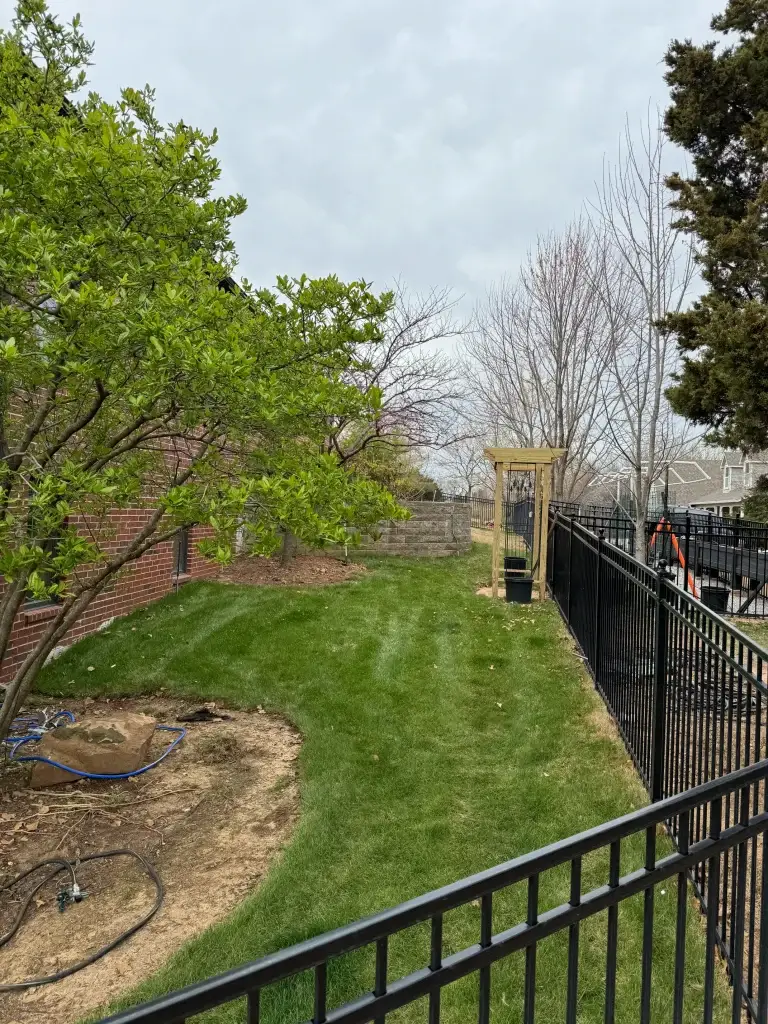Fescue sod care
fescue Sod Care guide
Fescue grass is a cool-season option well-suited for Tulsa’s shady yards, but it requires extra attention to thrive in the region’s warm climate. Fescue prefers partial to full shade, making it an excellent choice for areas with limited sun. Water the lawn 3-4 times weekly during the summer months, focusing on morning watering to avoid fungal issues. During cooler seasons, reduce watering to 1-2 times per week as needed. To maintain its green appearance, overseed thin areas every fall, as Fescue grows in clumps rather than spreading. Fertilize in early spring and fall with a balanced fertilizer to strengthen roots and improve color. Keep the grass height at 3-4 inches to help retain soil moisture and reduce heat stress. Mow frequently, but avoid cutting more than one-third of the blade length in a single mow. Aerate the lawn in the fall to improve soil structure and water penetration. Monitor for fungal diseases like brown patch, which can occur in hot, humid conditions. With its year-round green color, Fescue creates a stunning lawn when properly nurtured.

fescue Sod Care guide
Fescue grass is a cool-season option well-suited for Tulsa’s shady yards, but it requires extra attention to thrive in the region’s warm climate. Fescue prefers partial to full shade, making it an excellent choice for areas with limited sun. Water the lawn 3-4 times weekly during the summer months, focusing on morning watering to avoid fungal issues. During cooler seasons, reduce watering to 1-2 times per week as needed. To maintain its green appearance, overseed thin areas every fall, as Fescue grows in clumps rather than spreading. Fertilize in early spring and fall with a balanced fertilizer to strengthen roots and improve color. Keep the grass height at 3-4 inches to help retain soil moisture and reduce heat stress. Mow frequently, but avoid cutting more than one-third of the blade length in a single mow. Aerate the lawn in the fall to improve soil structure and water penetration. Monitor for fungal diseases like brown patch, which can occur in hot, humid conditions. With its year-round green color, Fescue creates a stunning lawn when properly nurtured.

fescue Sod Care guide
Fescue grass is a cool-season option well-suited for Tulsa’s shady yards, but it requires extra attention to thrive in the region’s warm climate. Fescue prefers partial to full shade, making it an excellent choice for areas with limited sun. Water the lawn 3-4 times weekly during the summer months, focusing on morning watering to avoid fungal issues. During cooler seasons, reduce watering to 1-2 times per week as needed. To maintain its green appearance, overseed thin areas every fall, as Fescue grows in clumps rather than spreading. Fertilize in early spring and fall with a balanced fertilizer to strengthen roots and improve color. Keep the grass height at 3-4 inches to help retain soil moisture and reduce heat stress. Mow frequently, but avoid cutting more than one-third of the blade length in a single mow. Aerate the lawn in the fall to improve soil structure and water penetration. Monitor for fungal diseases like brown patch, which can occur in hot, humid conditions. With its year-round green color, Fescue creates a stunning lawn when properly nurtured.

